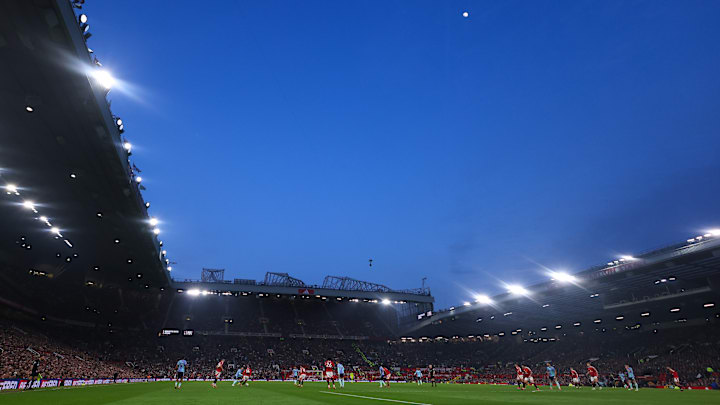Manchester United announced its eccentric plan to build a £2 billion stadium to move away from the historic Old Trafford. This project isn’t just about bricks and mortar, it’s an effort to reclaim global dominance while navigating financial tightropes to provide a state of the art facility dubbed “Wembley of the North”. The proposed 100,000-seat master stadium, slated to rise beside Old Trafford, promises to be the UK’s largest, but its success hinges on balancing vision with tough realities.
“Wembley of the North”
Designed by Foster + Partners, the stadium aims to be an architectural marvel. A colossal “umbrella” roof, twice the size of Trafalgar Square, will shelter a mixed-use district featuring bars, fan avenues, and cultural spaces. Three massive 200-meter masts will pierce Manchester’s skyline, visible from as much as 25 miles away. The club claims it’ll boost the UK economy by £7.3 billion annually, create multiple new jobs, and draw 1.8 million visitors. Sir Jim Ratcliffe likens its global pull to the Eiffel Tower, envisioning it as a magnet for United’s fans around the world.
United’s £1 billion debt looms large, but Ratcliffe insists financing is “doable.” Lessons from Tottenham’s stadium, where matchday revenue jumped £72 million, offer hope. However, borrowing £2 billion amid FFP scrutiny risks shackling the club with interest payments for decades. While Ratcliffe rules out public funds to be used for the stadium, government backing for surrounding infrastructure, including roads, transit, remains critical and uncertain at this stage.
Heritage vs. Progress
Replacing Old Trafford, an icon of the club, stirs deep unease among fans. The Manchester United Supporters Trust (MUST) demands transparency, wary of soaring ticket prices and lost atmosphere at the club lately. Liverpool’s Anfield expansion prioritized tourist-friendly tickets over local access. With 25,000 new seats, United matchdays will become corporate events priced beyond working-class fans. A similar project by Arsenal moving to Emirates dried up their success as a financial tightrope lingered ever since.
The Squad Impact
Chief executive Omar Berrada vows the project won’t hinder team investment, but skeptics recall Arsenal’s Emirates-era austerity. United’s squad needs a €500 million surgery to their squad fit to Amorim’s needs, diverting funds to the stadium debt could delay revival fans desperately want. Ratcliffe’s promise of “world’s best team in the world’s best stadium” rings hollow without trophies.
United’s gamble is typical Ratcliffe; high-risk, high-reward. If executed flawlessly, it could redefine northern England’s economy and United’s global brand. But missteps, financial overreach, alienating fans in the process, could deepen the club’s crisis. For supporters, the dilemma is stark, cling to nostalgia or bet on a glittering, uncertain future, but one thing’s clear, this new venture will test United’s resolve like never before.
